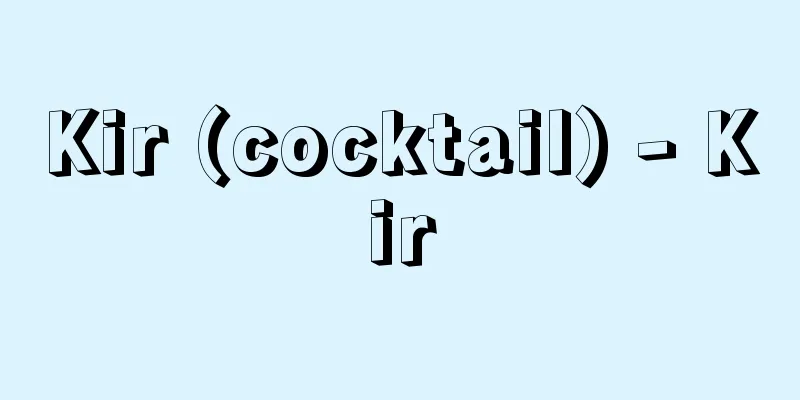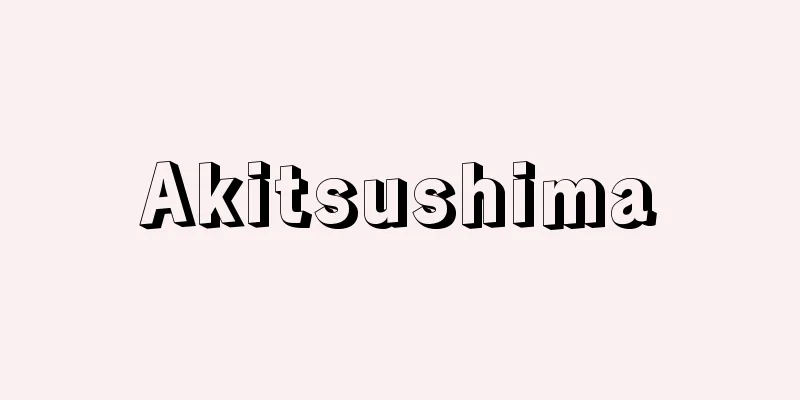Bedding stratification

|
The layered arrangement of rocks found in sediments. During the depositional process, due to changes in the composition of particles and changes in flow rate, mineral particles and rock fragments are arranged in layers, and plate-like layers of different lithologies are piled up. The boundary surface between layers thus created is called a bedding plane. Laminations found inside layers are recognized by differences in color, grain size, and particle composition, but sometimes the two cannot be strictly distinguished. Bedding and lamination are often distinguished by the thickness of the layer, which can be distinguished from the upper and lower strata depending on the rock type. In this case, a layer with a thickness of 1 cm or less is called a foliation, and is distinguished from a layer with a thickness of 1 cm or more. The corresponding stratification states are lamination (1 cm or less) and bedding (1 cm or more). Lamination planes are also usually called bedding planes. When classifying the stratification state according to the thickness of the layer or foliation, the following classifications are used: (1) very thick bedding (over 1 meter), (2) thick bedding (30 centimeters to 1 meter), (3) medium bedding (10 to 30 centimeters), (4) thin bedding (1 to 10 centimeters), (5) foliation (0.3 to 1 centimeter), and (6) thin foliation (0.3 centimeters or less). The term bedding is not only used to distinguish between layers by thickness, but also to distinguish between the structure formed by a layer during deposition and the internal structure of a layer. For example, cross-bedding and graded bedding indicate a sedimentary structure that represents a specific state of stratification. [Akihiro Murata] [Reference items] | | | | | |Source: Shogakukan Encyclopedia Nipponica About Encyclopedia Nipponica Information | Legend |
|
堆積(たいせき)物中にみられる岩石の層状の配列。堆積過程中に、粒子の構成物の変化や流速の変化などで、鉱物粒子や岩石片が層状に配列し、岩質の互いに異なる板状の単層が積み重なっていることをいう。このようにして生じた単層と単層の境界面を層理面とよぶ。単層の内部にみられる葉理は、色調や粒径の違い、粒子の組成の違いによって認識されるが、両者を厳密に区別できないことがある。層理と葉理は、岩質によって上下の地層と区別できる単層の厚さによって区別されることが多い。この場合、単層の厚さが1センチメートル以下のものを葉層とよび、1センチメートル以上の単層と区別する。この両者に対応する成層状態が、葉理(1センチメートル以下)と層理(1センチメートル以上)である。葉理面も通例、層理面とよばれる。 成層状態を単層あるいは葉層の厚さによって区分する場合は、(1)極厚層理(ごくこうそうり)(1メートル以上)、(2)厚層理(30センチメートル~1メートル)、(3)中層理(10~30センチメートル)、(4)薄層理(はくそうり)(1~10センチメートル)、(5)葉層理(0.3~1センチメートル)、(6)薄葉層理(0.3センチメートル以下)という分類が用いられる。 また層理ということばは、単に厚さで区別されるだけでなく、堆積時に単層がつくる構造や、単層の内部構造などを区別するときに用いられる。たとえば斜交層理や級化層理はある特定の成層状態を表した堆積構造を示している。 [村田明広] [参照項目] | | | | | |出典 小学館 日本大百科全書(ニッポニカ)日本大百科全書(ニッポニカ)について 情報 | 凡例 |
Recommend
Clothing ticket - clothing ticket
These were clothing rationing tickets, implemente...
Haguenau
…In France, in particular, the Tréboul type was i...
Radiation pressure
The pressure that electromagnetic waves exert on ...
Calvatia craniiformis (English spelling) Calvatia craniiformis
...It can be eaten when young. Calvatia craniifor...
Furry beast - Kegawaju
A general term for mammals that use fur. Fur is ge...
Amalgam plating
…A metalworking decoration technique in which gol...
Jinjiang (China) - Jinjiang
…The history of silk weaving in the Sichuan regio...
Environmental Impact Assessment
Also known as an environmental assessment, prior ...
Intarsia (English spelling)
A type of marquetry. When it is made only from pie...
Erythra Sea - Erythra Sea
…The Antarctic Ocean is part of the Indian Ocean,...
sauce aux fruits
…(2)sauce sabayon: made by mixing egg yolks and s...
Things - things
[Conjunction particle] In colloquial speech, it is...
Smilax biflora (English spelling)
…[Tetsuichi Yahara]. … *Some of the terminology t...
Lizard - Lizard
A general term for reptiles with well-developed li...
Perfectly reflective surface - Perfectly reflective surface
…Reflection from a paint surface, where light is ...




![Matsushige [town] - Matsushige](/upload/images/67cce73ddd213.webp)




